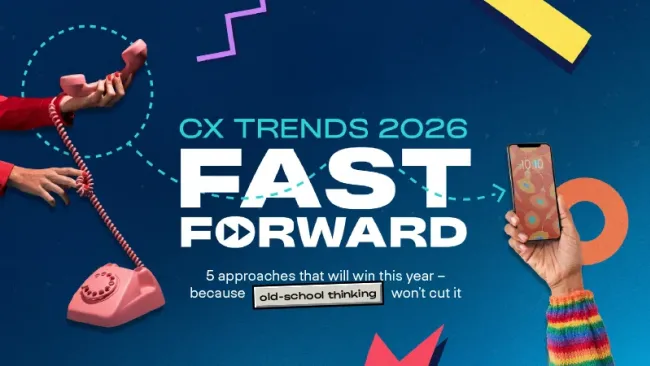At the 2020 National Retail Federation, on the eve of the pandemic, our writers noted that the future of retail was about removing barriers. Among so much change this much remains true, but how do we make retail experiences as easy and enjoyable as possible in our post-COVID world? How do we make interactions ‘effortless’ for customers?
The modern retail customer craves personalization, seamless conversations, and communication at every point in the journey. These roll up into what we call ‘effortless’ experiences, which will define the new age in retail.
Meeting these challenges while reducing cost to serve will require a digital-first, customer-centric approach. More often we are seeing digitally transforming legacy support systems as a key to meeting modern expectations.
To better understand this, let’s explore the 5 retail strategies that are defining the industry and unlocking success on all fronts.
1. Tap into the power of remote work
The unprecedented product and human demands that came out of the pandemic tested retailers’ resources. With post-pandemic online shopping increasing and deals running longer and earlier, consistent quality and service levels are essential to keep operations running smoothly and customers happy. Mishaps like delays, data breaches, product recalls, and inclement weather will continue to effect retail surge volumes. But as many retailers saw, the value of remote support can help ease the burden.
Innovations in knowledge, messaging, and security helped retailers achieve great results from a remote model that could maintain service levels, and ultimately drive customer loyalty by replicating the brick-and-mortar values customers love digitally.
Post-pandemic success rides on flexibility. At-home hiring lets retailers dip into a wide talent pool of a diverse and highly skilled workforce when needed to support customer service and sales inquiries. The scalability and efficiency of at-home employment allows retailers to easily to accommodate fluctuating interaction volumes during peak seasons, a perk not easily available through traditional means.
2. Optimize the cloud for omnichannel support
Shopping channels are no longer static—customers can switch from voice, to chat, and messaging in just one interaction. Retailers need to remain nimble. Unfortunately, legacy systems are often overwhelmed and there’s no integration among disparate channels. Retailers during the pandemic realized the value of holistically interacting with customers in the channels they prefer while optimizing technology, processes, and people.
Cloud contact centers provide many benefits, such as increased flexibility, cost savings, and the ability to support customers from virtually anywhere. By focusing on omnichannel routing, interactive voice response (IVR), and CRM integration you can direct customers volume to the best communication channel for them. Intelligent routing of calls can also improve customer experiences, average handle time, and call center agent performance.
3. Combine automation & empathy for a total shopping experience
Customers will always need information about store hours, return policies, and delays, among other topics. Answering these simple but time-consuming inquiries while also handling more complex conversations can slow agents down immensely.
Repetitive, simple tasks can be alleviated with automated customer self-service capabilities. Digital transformation powered by intelligent automation helps ease the effort needed by both your agents and customers during busy surge hours where the human touch is needed most.
Retailers who deployed Robotic Process Automation (RPA) and Robotic Desktop Automation (RDA) offerings helped free employees up for more nuanced interactions that impact brand loyalty and customer happiness. Intelligent automation solutions such as these improve CX and drive bottom-line results, reduce average turnaround time, and resolve issues anytime.
Remember, if a retail journey starts slow, your customers will go elsewhere. Automation can provide customer self-service and alleviate processes that eat up time with virtual assistants. RPA and RDA software works in unison to minimize disruption and facilitate more efficient CX delivery from first-impressions to checkout.
4. Hit me up on text
Texting is quickly becoming the preferred customer communication channel. In retail, customers want to be updated about availability and delivery dates at every point of the journey. Retailers can quickly reassure customers with updates and delivery notifications that reduce customer effort to locate purchases and help them relax, thereby increasing brand loyalty.
Unlike web-based chat that occurs in a pop-up screen where both parties must be logged in, messaging is asynchronous, meaning you don’t need to stay in a dedicated session to send or receive messages. Messaging takes the idea of web chat, simplifies it, and moves it to where consumers already spend their time—on their phones.
Asynchronous messaging capabilities allow customer service to more than double the number of interactions they can handle concurrently on the channels customers prefer to keep them updated before a product even reaches their doorstep.
5. Seamlessly connect the entire retail customer journey
Retailers can’t create seamless experiences without first knowing the level of effort that goes into each retail interaction. Understanding where and why different customers interact with their brand allowed retailers to orchestrate better journeys that delivered personalized experiences and anticipated demands.
Converting data into insight by deploying technologies like voice of the customer and speech analytics to evaluate daily interactions and pain points for the customer is an incredibly powerful took. These insights help enhance customer journeys and further develop associates’ ability to create meaningful moments for customers.
Rather than trying to make blanket improvements, a narrow focus can illuminate which areas will drive the most CX improvement and ROI. Prioritize and act on the most common call types or frustration points for customers with data analytics. These tools will continuously spot business trends and react swiftly to reputation issues, assortment opportunities, and supply chain activities.
Usher in an age of ‘effortless’ customer (and employee) experiences
Retailers that persevered through the pandemic didn’t survive on deals alone, they stood out because they showed that they knew their customers. Organizations that utilize the best of people and technology from these five strategies can cultivate loyalty, revitalize sales, and maintain the agility to match customer expectations at every point of the journey.















